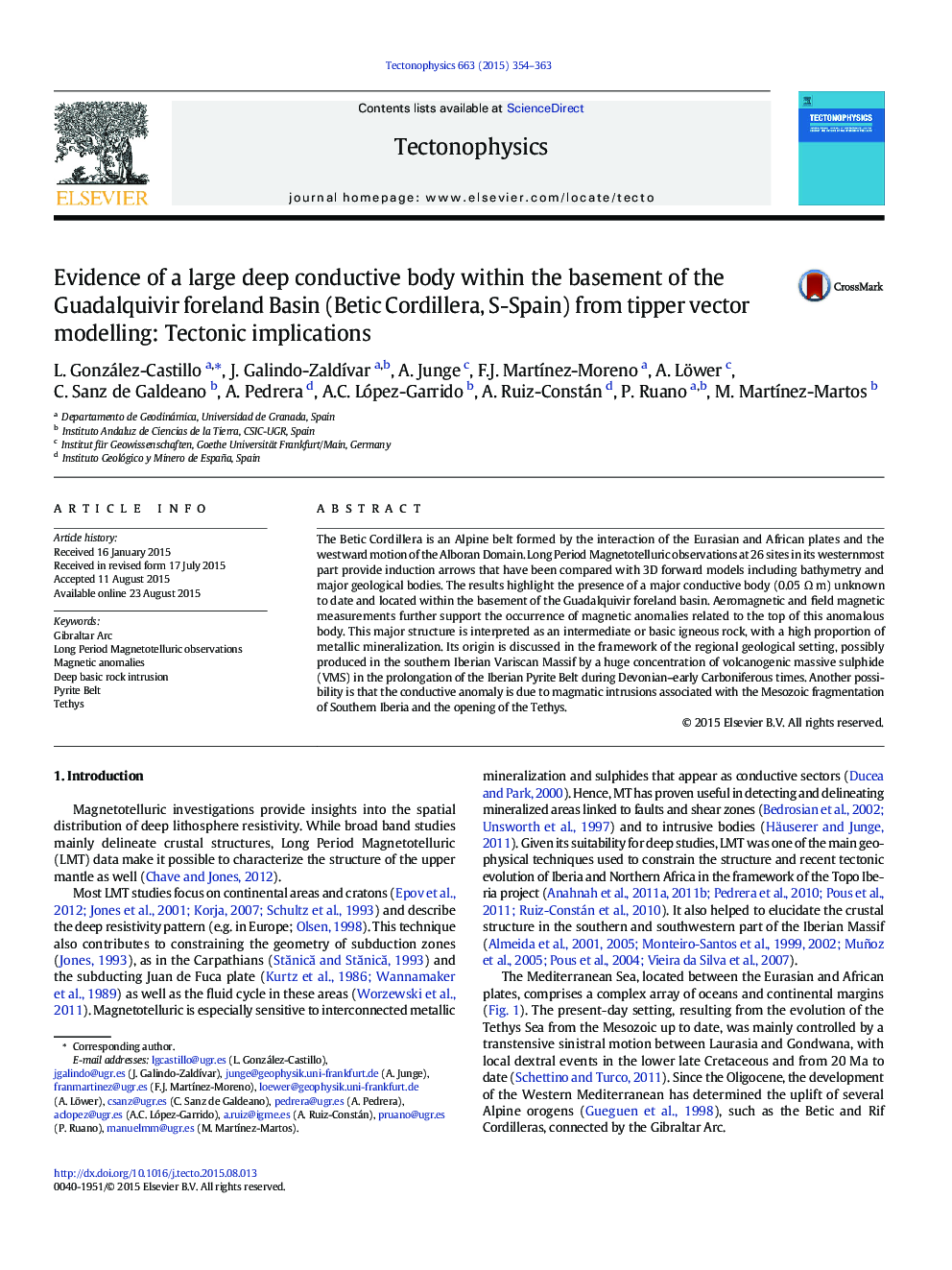| کد مقاله | کد نشریه | سال انتشار | مقاله انگلیسی | نسخه تمام متن |
|---|---|---|---|---|
| 6433560 | 1636732 | 2015 | 10 صفحه PDF | دانلود رایگان |

- Long Period Magnetotelluric data were acquired in the west Gibraltar Arc.
- The most remarkable conductive body is located in Guadalquivir Basin basement.
- The intense magnetic positive anomaly suggests metallic mineralized rocks.
- The anomaly could be related to a concentration of volcanogenic massive sulphide.
- The Tethys opening could also explain the Mesozoic emplacement of the body.
The Betic Cordillera is an Alpine belt formed by the interaction of the Eurasian and African plates and the westward motion of the Alboran Domain. Long Period Magnetotelluric observations at 26 sites in its westernmost part provide induction arrows that have been compared with 3D forward models including bathymetry and major geological bodies. The results highlight the presence of a major conductive body (0.05 Ω m) unknown to date and located within the basement of the Guadalquivir foreland basin. Aeromagnetic and field magnetic measurements further support the occurrence of magnetic anomalies related to the top of this anomalous body. This major structure is interpreted as an intermediate or basic igneous rock, with a high proportion of metallic mineralization. Its origin is discussed in the framework of the regional geological setting, possibly produced in the southern Iberian Variscan Massif by a huge concentration of volcanogenic massive sulphide (VMS) in the prolongation of the Iberian Pyrite Belt during Devonian-early Carboniferous times. Another possibility is that the conductive anomaly is due to magmatic intrusions associated with the Mesozoic fragmentation of Southern Iberia and the opening of the Tethys.
Journal: Tectonophysics - Volume 663, 16 November 2015, Pages 354-363